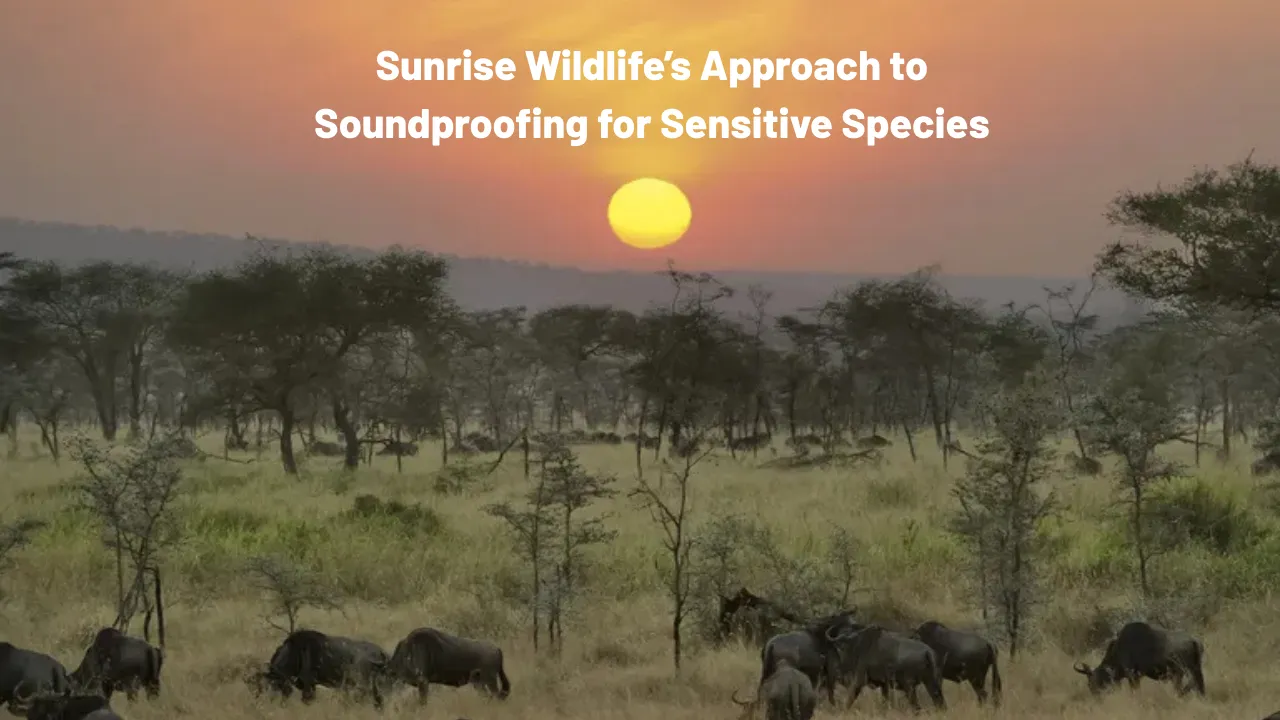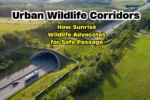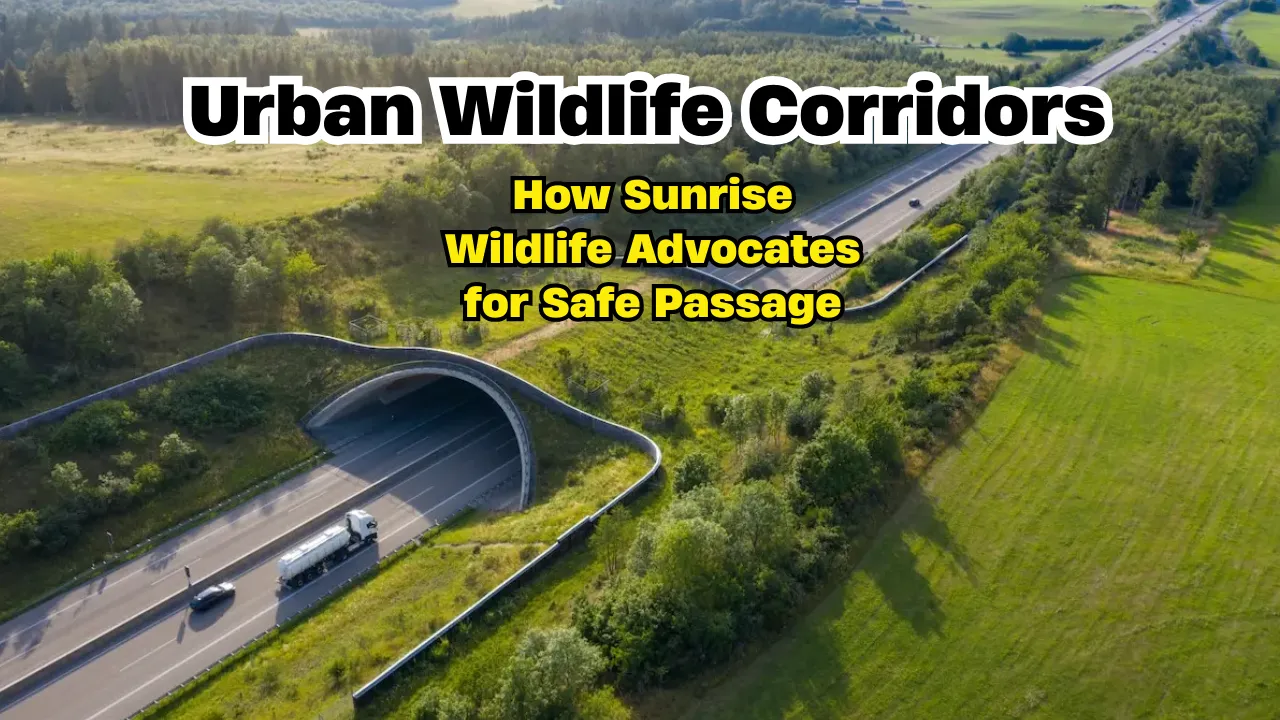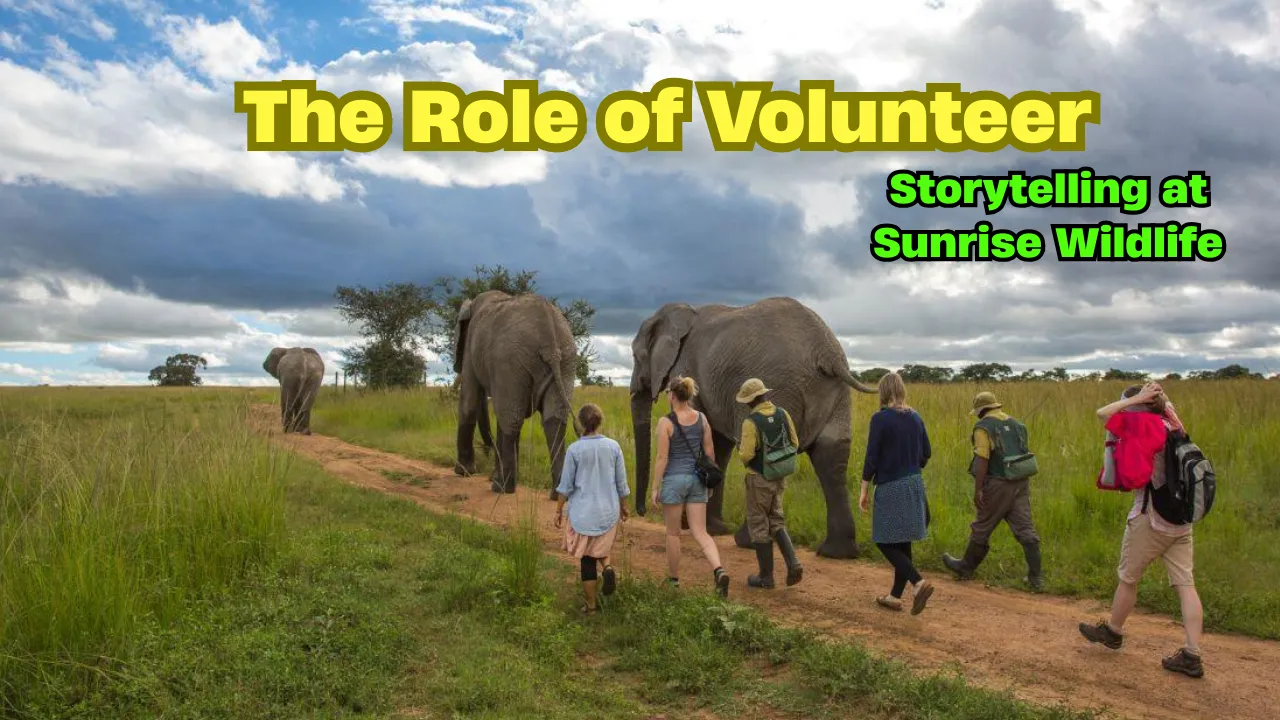Soundproofing for sensitive species is an increasingly vital consideration in the design and operation of wildlife sanctuaries and rehabilitation centers. As public awareness grows about animal stress and mental health in captivity, noise control is taking center stage in the way habitats are built and managed. Whether it’s the shrill noise of visitors, vehicle hum, or construction sounds from nearby urban developments, the modern world brings with it a range of challenges for animals with acute hearing.
In response to these pressures, Sunrise Wildlife has pioneered a forward-thinking approach that blends technology, design, and natural landscaping to create calmer environments for its most sound-sensitive residents. This article offers a detailed look into the practical steps being taken—from intelligent enclosure layout to acoustic materials—to help minimize noise exposure and promote overall animal wellness in captivity.
Soundproofing for Sensitive Species
Soundproofing for sensitive species is not just about building barriers; it’s about creating thoughtful spaces where animals feel safe. At Sunrise Wildlife, this means integrating noise-reduction strategies at every level—from enclosure structure and location to staff training and even visitor interaction. By using high-quality acoustic insulation, sound-absorbing natural elements, and real-time noise monitoring, the sanctuary ensures that its quietest residents, such as owls, small mammals, and certain reptiles, are protected from stress-inducing disruptions. The goal isn’t just peace and quiet, but a sustainable, health-promoting habitat tailored to each species’ natural behavior and biological needs.
Overview of Sunrise Wildlife’s Noise-Reduction Approach
| Technique | Purpose | Key Benefit |
| Acoustic foam panels | Absorb sound within enclosures | Reduces echo and internal disturbance |
| Mass-loaded vinyl | Blocks external noise from entering | Maintains peaceful environment |
| Vegetative sound barriers | Natural sound absorption | Blends into habitat aesthetics |
| Staff behavior training | Reduces human-generated noise | Improves animal comfort |
| Real-time sound monitoring | Tracks and responds to noise fluctuations | Prevents long-term noise exposure |
| Enclosure placement strategies | Places sensitive species in quieter zones | Minimizes contact with loud areas |
Understanding the Need for Soundproofing
In the wild, animals have the ability to flee from loud or threatening sounds. In captivity, however, they’re confined to specific areas with limited control over their sensory environment. For species such as lemurs, parrots, foxes, and sloths, even intermittent or seemingly minor noises can cause anxiety, disrupt sleep patterns, or alter their feeding behavior. This stress not only impacts animal welfare but can also reduce the effectiveness of breeding programs and overall health outcomes.
Sunrise Wildlife has recognized that noise control is not optional—it’s foundational. By designing its enclosures with soundproofing at the forefront, they are setting a new standard for humane and intelligent captive animal care.
Materials Used for Noise Reduction
Sunrise Wildlife has invested in high-performance materials to reduce sound transmission and absorption. These include:
- Acoustic foam panels placed inside walls and ceilings, which absorb echo and reduce interior sounds.
- Mass-loaded vinyl barriers, known for their dense structure, which effectively block external noises from reaching sensitive animals.
- Eco-friendly insulation made from cork and recycled wool that adds an additional quiet layer while maintaining safe indoor temperatures.
Each material is chosen not only for its noise-reduction capabilities but also for being safe and sustainable—aligned with Sunrise Wildlife’s broader mission of environmental responsibility.
Enclosure Design and Placement
Physical location and design of wildlife enclosures are just as important as the materials used. At Sunrise Wildlife, sensitive species are placed far from visitor entrances, maintenance areas, or parking lots. Where possible, enclosures are designed to be recessed slightly into the landscape or surrounded by natural hills and berms, which act as soundproof barriers.
Windows are double-glazed and any external doors are sealed tightly. Roofing materials are selected to absorb rainfall sounds—important for species that become agitated during storms. Irregular wall shapes further help to scatter sound waves, minimizing reverberation and enhancing the animal’s comfort.
Natural Landscaping as a Sound Barrier
Nature provides some of the most effective tools for managing sound. At Sunrise Wildlife, trees, hedges, and earth mounds are integrated not only for visual aesthetics but for noise control.
- Dense foliage is planted around enclosure perimeters to reduce wind and road noise.
- Earthen mounds are strategically built to reflect and absorb sound waves from nearby human activity.
- Natural water features, such as streams and ponds, help to create ambient white noise that soothes animals and masks unpleasant sounds.
These landscape features are low-maintenance and serve the dual purpose of creating quiet habitats while enhancing environmental enrichment.
Staff Training and Quiet Zones
Even the best soundproofing can be undone by human behavior. That’s why Sunrise Wildlife trains its staff in low-noise operations. This includes:
- Avoiding loud conversations near enclosures
- Using electric carts instead of fuel-powered vehicles
- Choosing soft-soled shoes for caretakers
- Timing construction or maintenance work during periods when animals are least active
Visitors are also educated about sound sensitivity in animals, and quiet zones are marked with clear signage encouraging respectful behavior around sensitive enclosures.
Smart Technologies in Sound Management
Sunrise Wildlife also uses smart technologies to improve soundproofing efficiency:
- Sound level monitors are installed near enclosures to track environmental noise and alert staff when levels rise.
- Mobile sound barriers can be temporarily moved to protect animals during events or unexpected noise spikes.
- Noise dampening paint and wall coatings add a subtle but effective layer of control without compromising enclosure aesthetics.
Such technologies not only protect animals but help the facility respond quickly to environmental changes, making wildlife enclosures more adaptive and future-ready.
Two Key Techniques Used at Sunrise Wildlife:
- Acoustic Panel Installation
- These panels are made from fire-retardant and non-toxic materials and placed inside enclosures to absorb sound. They reduce echo, maintain a consistent sound environment, and promote animal welfare.
- These panels are made from fire-retardant and non-toxic materials and placed inside enclosures to absorb sound. They reduce echo, maintain a consistent sound environment, and promote animal welfare.
- Strategic Enclosure Positioning
- Sensitive species are housed in quieter zones, shielded from public areas and loud infrastructure. Additional natural buffers like hills, trees, and ponds help isolate sound naturally and maintain the calm needed for proper care.
FAQs
What types of animals are considered sound-sensitive?
Animals like owls, small primates, sloths, and certain reptiles are highly sensitive to noise and require specially designed environments.
Are soundproofing materials safe for animals?
Yes, Sunrise Wildlife uses only certified non-toxic and eco-friendly materials suitable for use in animal enclosures.
Can visitors affect noise levels?
Yes. That’s why visitors are encouraged to speak softly, especially around clearly marked quiet zones for sensitive animals.
How is technology used in noise control?
Real-time sound monitors and smart dampening systems help keep noise levels in check and respond quickly to changes in the environment.
Does soundproofing improve breeding success?
Absolutely. Stress from noise can interfere with natural mating behaviors. Quiet, calm surroundings increase the success of breeding programs.
Final Thought
Soundproofing for sensitive species goes far beyond silencing a space—it’s about creating an environment where animals can feel safe, behave naturally, and live healthily in captivity. Sunrise Wildlife’s multi-layered strategy combines modern materials, smart design, and deep respect for animal instincts. Their approach doesn’t just improve animal lives; it raises the bar for how sanctuaries and zoos should function.
If this inspired you, share it with someone who cares about wildlife. Leave a comment with your thoughts or check out related topics on habitat design and animal behavior. Let’s build a quieter, kinder world for all species.












